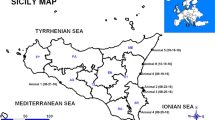Abstract
During regulatory and routine surveillance sampling of apparently healthy baitfish from the state of Minnesota, a novel totivirus (tentatively named “golden shiner totivirus”, GSTV) was detected in a homogenate of kidney and spleen of golden shiner (Notemigonus crysoleucas). The nearly complete genome is 7788 nt long with a complete 5’ untranslated region (UTR) of 135 nt (1-135 nt position), complete open reading frames (ORFs) and a partial 3’ UTR of 54 nt (7734-7788). The sequence is comprised of two ORFs (ORF1 and ORF2). The larger ORF1 encodes a 1659-aa polypeptide in frame +1 from nt position 136 to 5115 (4980 nt) with a start codon at position 136-138 and a stop codon at position 5113-5115. The ORF1 is 54 aa longer than the 1605-aa ORF1-encoded protein of a reference strain of infectious myonecrosis virus (IMNV), ID-EJ-12-1(AIC34743.1). The predicted ORF1 and ORF2 fusion protein sequence was NFQDGG. Hence, an overlapping region of 99 nt was observed, which is shorter than the 172-nt and 199-nt overlapping regions in Armigeres subalbatus totivirus (AsTV) and IMNV, respectively. GSTV formed a separate lineage based on phylogenetic analysis of ORF1-encoded major capsid protein (MCP) and ORF2-encoded RNA-dependent RNA polymerase (RdRp) sequences. Based on ORF1 MCP sequence analysis, GSTV was most closely related to IMNV, with maximum aa sequence identity of 26.42-27.86 %, followed by 26.59, 22.94 and 21.75 % for Drosophila totivirus (DTV), AsTV and Omono River virus (OMRV), respectively. Similar to ORF1, the ORF2 (RdRp) of GSTV formed a separate clade with maximum identity of 38.10 % and 38.50 % to IMNV and DTV, respectively. The virus identified here differs enough from its closest relative that it may represent a new genus in the family Totiviridae. The disease-causing potential and management impact of this novel virus is unknown at this time.





Similar content being viewed by others
References
Drummond AJ, Ashton B, Buxton S, Cheung M, Copper A, Duran C, Field M, Held J, Kearse M, Markowitz S, Moir R, Stones-Havas S, Sturrock S, Thierer T, Wilson A (2011) Geneious v5.4. Available from http://www.geneious.com/
Felsenstein J (1985) Confidence limits on phylogenies: an approach using the bootstrap. Evolution 39(4):783–791
Haugland O, Mikalsen AB, Nilsen P, Lindmo K, Thu BJ, Eliassen TM, Roos N, Rode M, Evensen O (2011) Cardiomyopathy syndrome of Atlantic salmon (Salmo salar L.) is caused by a double-stranded RNA virus of the Totiviridae family. J Virol 85:5275–5286
Isawa H, Kuwata R, Hoshino K, Tsuda Y, Sakai K, Watanabe S, Nishimura M, Satho T, Kataoka M, Nagata N, Hasegawa H, Bando H, Yano K, Sasaki T, Kobayashi M, Mizutani T, Sawabe K (2011) Identification and molecular characterization of a new nonsegmented double-stranded RNA virus isolated from Culex mosquitoes in Japan. Virus Res 155:147–155
Mor SK, Phelps NBD (2016) Detection and molecular characterization of a novel piscine myocarditis-like virus from baitfish in the USA. Arch Virol. doi:10.1007/s00705-016-2873-0
Naim S, Brown JK, Nibert ML (2014) Genetic diversification of penaeid shrimp infectious myonecrosis virus between Indonesia and Brazil. Virus Res 189:97–105
Nibert ML (2007) ‘2A-like’ and ‘shifty heptamer’ motifs in penaeid shrimp infectiousmyonecrosis virus, a monosegmented double-stranded RNA virus. J Gen Virol 88:1315–1318
Phelps NBD, Mor SK, Armien AG, Batts W, Goodwin AE, Hopper L, McCann R, Ng TFF, Puzach C, Waltzek T, Winton J, Goyal SM (2014) Isolation and molecular characterization of a novel picornavirus from baitfish in the USA. PLoS ONE 9:875–893
Poulos BT, Tang KFJ, Pantoja CR, Bonami JR, Lightner DV (2006) Purification and characterization of infectious myonecrosis virus of penaeid shrimp. J Gen Virol 87:987–996
Tamura K, Stecher G, Peterson D, Filipski A, Kumar S (2013) MEGA6: molecular evolutionary genetics analysis version 6.0. Mol Biol Evol 30:2725–2729
Tang J, Ochoa WF, Sinkovits RS, Poulos BT, Ghabrial SA, Lightner DV, Baker TS, Nibert ML (2008) Infectious myonecrosis virus has a totivirus-like,120-subunit capsid, but with fiber complexes at the fivefold axes. Proc Natl Acad Sci USA 105:17526–17531
Theis C, Reeder J, Giegerich R (2008) KnotInFrame: prediction of -1 ribosomal frameshift events. Nucleic Acids Res 36:6013–6020
Turner Douglas H, Mathews David H NNDB (2010) The nearest neighbor parameter database for predicting stability of nucleic acid secondary structure. Nucleic Acids Res 38:D280–D282
USDA (United States Department of Agriculture) (2006) Census of Aquaculture (2005). 2002 Census of Agriculture: Special Studies Part 2. Vol. 3 AC-02-SP-2
USFWS and AFS-FHS (U.S. Fish and Wildlife Service and American Fisheries Society-Fish Health Section) (2010) Standard procedures for aquatic animal health inspections. In: AFS-FHS, FHS blue book: suggested procedures for the detection and identification of certain finfish and shellfish pathogens, ed. Bethesda, Maryland: AFS-FHS
Wickner RB, Ghabrial SA, Nibert ML, Patterson JL, Wang CC (2012) Virus taxonomy: ninth report of the international committee on taxonomy of viruses. Totiviridae. Academic Press, Waltham, pp 639–650
Wiik-Nielsen J, Alarcón M, Fineid B, Rode M, Haugland Ø (2013) Genetic variation in Norwegian piscine myocarditis virus in Atlantic salmon, Salmo salar L. J Fish Dis 36:129–139
Yang X, Zhang Y, Ge X, Yuan J, Shi Z (2012) A novel totivirus-like virus isolated from bat guano. Arch Virol 157:1093–1099
Zhai Y, Attoui H, Mohd Jaafar F, Wang HQ, Cao YX, Fan SP, Sun YX, Liu LD, Mertens PP, Meng WS, Wang D, Liang G (2010) Isolation and full-length sequence analysis of Armigeres subalbatus totivirus, the first totivirus isolate from mosquitoes representing a proposed novel genus (Artivirus) of the family Totiviridae. J Gen Virol 91:2836–2845
Acknowledgments
The authors thank the University of Minnesota Veterinary Diagnostic Laboratory.
Author information
Authors and Affiliations
Corresponding author
Ethics declarations
Conflict of interest
The authors declare that they have no conflict of interest.
Electronic supplementary material
Below is the link to the electronic supplementary material.
Rights and permissions
About this article
Cite this article
Mor, S.K., Phelps, N.B.D. Molecular detection of a novel totivirus from golden shiner (Notemigonus crysoleucas) baitfish in the USA. Arch Virol 161, 2227–2234 (2016). https://doi.org/10.1007/s00705-016-2906-8
Received:
Accepted:
Published:
Issue Date:
DOI: https://doi.org/10.1007/s00705-016-2906-8




